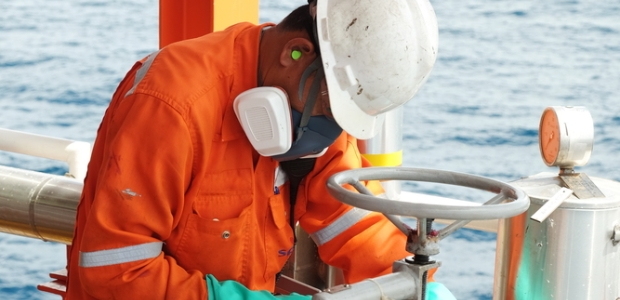
Air Monitoring for Health and Safety of Industrial Workers
Monitoring gas and vapor hazards is necessary to ensure workers' health and to see that the working environment is healthy.
All industrial locations and factories can be considered as hazardous areas. The different types of hazards encountered in industry and which are responsible for accidents are burns, striking objects, asphyxiation, falls, electrocutions, vehicle accidents, etc.
Apart from the above-mentioned hazards, industrial air pollution is also one of the most important but less acknowledged hazards in many of the chemical factories. Hence it is necessary to monitor the working environment in factories for safety, as well as to ensure the workplace is healthy and free from pollutants.
Monitoring for safety is necessary because many of the gases, such as methane, propane, etc., that are stored in cylinders and used as fuel can be a source of explosion and fire hazards.
Toxic and corrosive gases, such as Cl2, NH3, CO, H2S, etc. are stored in cylinders and used in many chemical processes; they can also leak due to pipe ruptures or cylinder leaks and can lead to accidental exposure of workers to high levels of these toxic and corrosive gases.
There are innumerable man-made chemicals and toxic gases that number more than 100,000, according to a NIOSH report. One or more of these chemicals may be present at any chemical factory, and these chemicals can be present in the working environment, as well. Even if the concentration is very low, it may be sufficient to cause occupational diseases when workers are exposed to them over long periods of time.
Monitoring of these gases and vapors is therefore necessary to ensure the health of the workers and to see that the working environment is safe and healthy.
Health Problems and the Evolution of Laws and Regulations
Workplace-related health problems have a long history. Even in the 17th century, tanners, coopers, cobblers, millers, and others knew that by the time they reached 40 to 50 years of age, they would be crippled or even dead. Even the physicians of those days knew the problem, but they could do little about it.
With the Industrial Revolution and social awareness, the situation has now changed. The gross dangers and the inhuman exploitation and the unhealthy working environment that existed 200 years ago at workplaces have disappeared. Today, public awareness has increased. Many pollution control laws and regulations are in place, and guidelines are provided for handling toxic and hazardous substances. Occupational health and medicines have made great advances. No longer do we have to rely on our noses to detect toxic gases. We have instruments to detect toxic gases at ppm and ppb levels. We have a much better knowledge about the effects of pollutants on workers’ health, and we have the ways and means to avoid them.
Today, a worker who works every day for eight hours in a factory producing and handling hazardous chemicals can still lead a healthy life and retire as a healthy individual if we provide a healthy environment. Technologically it is possible to provide such an environment, and by law we are bound to do it.
Causes of Industrial 'Accidents'
If we study the nature of many of the industrial accidents, it will be a revealing experience, and we may find it is due to:
1. Gross ignorance on the part of all concerned about the nature and the effect of toxic gases on the health of industrial workers and the ways to prevent them.
2. Callous negligence and carelessness in handling and using chemicals.
3. Circumventing of established rules and procedures for handling chemicals in the workplace.
Hence, under these circumstances, the so-called accidents cannot be considered as accidents, but an incidence of negligence. The following example will illustrate this point.
For vessel entry or confined space entry, one is obliged to take a permit from a competent authority. The permit contains detailed instructions as to how to carry out the whole operation, which includes taking gas readings prior to entry, the use of breathing apparatus, how to carry out rescue operations, etc. What to do and what not to do under an emergency situation are also described. Yet we see reports where three people die in a row entering a confined space one after the other to assist a colleague.
Similar accidents happen in all metropolitan cities where workers entering underground sewers and big pipelines do not come out. Other workers enter to rescue them, and all of them die. Such reports appear in newspapers with monotonous regularity.
Examining these cases, it is obvious that the education of workers and managers on all aspects of safety and health is the first necessity. Existing rules and regulations should be strictly implemented. All of the factories and industrial locations using chemicals and toxic gases should follow laid-down handling and safety procedures and continuously monitor the working environment using proper gas and chemical detection devices.
Air Pollutants and Detection Devices
Normal air, which contains nitrogen at 78 percent, oxygen at 21 percent, and traces of CO2, argon, etc., can be contaminated by various other pollutants. These other pollutants can broadly be classified as particulate matter present as aerosols and gaseous pollutants. For the detection of these aerosols and gaseous pollutants, various types of detection devices are necessary.
This article originally appeared in the May 2017 issue of Occupational Health & Safety.